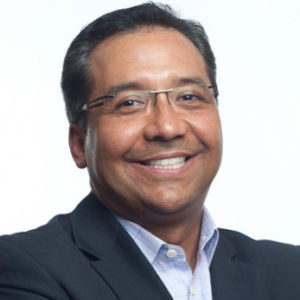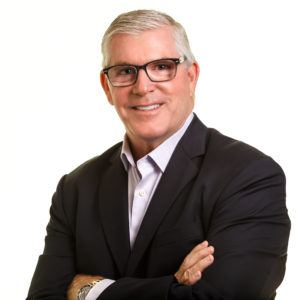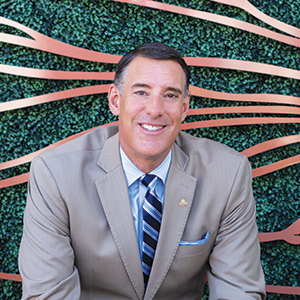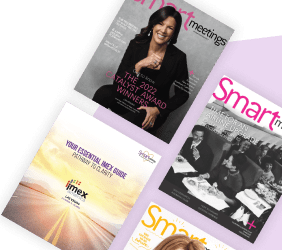Experts share tips for mastering 2019’s curves
As 2019 fades into history, will it be remembered as the year millennials led us toward a brave new world of impossible-everything food? Will every meeting now be sustainable and inclusive? (An editor can hope, right?) Was this year the turning point when meeting professionals truly doubled down on understanding attendee behavior?
Smart Meetings asked the experts to share what they saw as the biggest changes in their worlds, and for tips on how to adjust to any new realities in 2020. Find out what our readers had to say about rolling with the punches here.
Sustainable Partnerships
Mike Dominguez, president and CEO, ALHI
 We have evolved and matured as an industry. Being sustainable is now an expectation beyond just recycling. Big companies are looking at the entire carbon footprint. That means tracking the supply chain of vendors to measure all inputs and outputs with an emphasis on sourcing locally and favoring earth-friendly products.
We have evolved and matured as an industry. Being sustainable is now an expectation beyond just recycling. Big companies are looking at the entire carbon footprint. That means tracking the supply chain of vendors to measure all inputs and outputs with an emphasis on sourcing locally and favoring earth-friendly products.
Companies are now also examining what is left behind. Some meetings plan ahead to send unserved ingredients to food banks—not just for immediate consumption, but for months to come, by flash-freezing and delivering thoughtfully. New processes can store food in a safe environment for up to 90 days.
📍 Smart Tip: Partner with suppliers to help solve society’s biggest social problems—from environmental sustainability to hunger and homelessness. That is the power of the hospitality industry.
Benevolent Big Brother
Michael Burns, chief revenue officer, Aventri
 Attendee engagement is increasingly being viewed holistically. Marketers can now pinpoint their ideal customer profile and decipher their intent based on actions taken online and in the physical world. That level of understanding will come to events next. Meeting professionals must be able to chart the elements of a positive meetings experience for specific audiences.
Attendee engagement is increasingly being viewed holistically. Marketers can now pinpoint their ideal customer profile and decipher their intent based on actions taken online and in the physical world. That level of understanding will come to events next. Meeting professionals must be able to chart the elements of a positive meetings experience for specific audiences.
We have to go beyond self-reporting to decoding behavior—dwell-time in breakout rooms and at booths cross-referenced with content viewing will reveal true interest to create higher quality communication. That will lead to the creation of a seamless customer experience with an assist from real-time data analysis, integrated reporting and automation.
While all that data collection might sound a little “big brothery,” it is actually in the best interest of attendees to be sent only information that interests them. It could also result in the introduction of more sessions they actually want to attend. This may be pushing the boundaries of what is happening right now, but it is far from science fiction.
📍 Smart Tip: Pick a couple of things to track that will result in meaningful conclusions, and get started tracking.
Interactive Learning
Jessie States, director, MPI Academy
 Social learning took center stage as conference designers sought to increasingly enable audiences to learn from each other in new and unique ways. Requests for facilitators and moderators continued to grow alongside the sustained need for adept speakers and subject matter experts. The focus for conference designers has shifted permanently from basic set-up needs to incorporating adult learning theory and neuroscience into the experience design to enable better student environments that support memory, application and ultimate behavior change.
Social learning took center stage as conference designers sought to increasingly enable audiences to learn from each other in new and unique ways. Requests for facilitators and moderators continued to grow alongside the sustained need for adept speakers and subject matter experts. The focus for conference designers has shifted permanently from basic set-up needs to incorporating adult learning theory and neuroscience into the experience design to enable better student environments that support memory, application and ultimate behavior change.
Meeting professionals are increasingly asking for re-skilling for the 2030 workforce. This includes the shift from task to knowledge work, and how that impacts the job of the meeting professional in positive ways, while at the same time requiring advanced level skills in new areas like meetings- and business-related change management, tech fluency, global competence, strategic problem solving and more.
📍 Smart Tip: Often, our subject matter experts aren’t the best speakers—but they are the people with the right answers to our learners’ unique challenges. Train your speakers on unique formats; give them small-group and reflection activities to use every 10 to 15 minutes and enable them with sessions that are designed to help them share their knowledge without feeling the need to fill 60 minutes of lecture.
Embracing Inclusion
David Jeffreys, executive director and CEO, LGBT Meeting Professionals Association
 Increased levels of awareness about the importance of diversity and inclusion is visible in increased numbers of sessions on the topic in programs, but that is not translating into larger budgets for training and education.
Increased levels of awareness about the importance of diversity and inclusion is visible in increased numbers of sessions on the topic in programs, but that is not translating into larger budgets for training and education.
It also doesn’t automatically translate into making the selection of venues dependent on the destination being welcoming to all. That is particularly a challenge when destinations are chosen and contracts signed years in advance and then elected officials pass legislation that is seen as being negative to certain audiences. Not all meeting planners control where their meetings are held. This alone can make it difficult to meet diversity expectations. Sometimes, meeting professionals have to do the best they can, wherever they find themselves.
📍 Smart Tip: A new LGBT Supplier Diversity resource guide available through LGBT Meeting Planners Association can help planners identify vendors that meet inclusion standards.
Millennial Friendly
Don Welsh, CEO, Destinations International
 The next generation of meeting space is being created today. Destinations International conducted research through Destinations Analytics that was a call to action for convention and visitors bureau members to support the actual execution of meetings. The study, which was an awakening for many, showed that meeting the needs of millennials will require everyone to step up their game.
The next generation of meeting space is being created today. Destinations International conducted research through Destinations Analytics that was a call to action for convention and visitors bureau members to support the actual execution of meetings. The study, which was an awakening for many, showed that meeting the needs of millennials will require everyone to step up their game.
As the industry and planners change, the meeting organizer’s tasks of just checking space, hotel availability, logistics, etc. are being overshadowed by broader considerations and a more advanced approach. The expectations and demands are getting bigger and more complex as events focus on cultural values and other factors. In this new setting, destinations that understand the importance of developing a true strategy around a potential client’s vision and can deliver a program true to that vision will be more successful.
📍 Smart Tip: CVBs offer myriad services and support to professional planners—at no cost—both before and after the destination has been selected, and they can be especially helpful allies to a planner who is unfamiliar with the destination.
Funtastic F&B
Michael Massari, chief sales officer, Caesars Entertainment
Consolidation in the larger economy is resulting in bigger meetings, but we have not lost track of the reason we meet—individual people. Creative meals bring colleagues and friends together. That is increasingly looking like pop-up food halls, and vegan and healthy options. Whether the meal is for 10 people or 35,000, the level of service and quality of food needs to be that of a fine restaurant.
📍 Smart Tip: Work with your hotel partners to come up with vegetarian options that are just as tasty and satisfying as any other menu.





